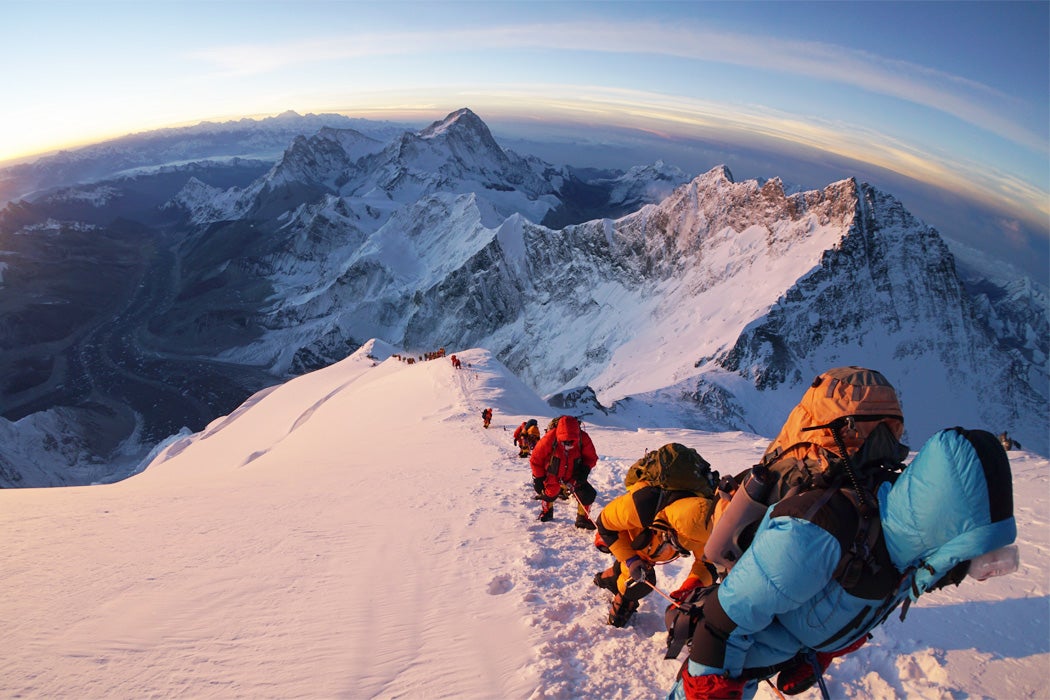As the world’s tallest mountain, Mount Everest has long drawn more than its fair share of adventurers—and caused no shortage of deaths. But the 2019 Spring climbing season was especially deadly, with 11 climbers dying in less than a week, amid unprecedented crowds of climbers waiting to summit. The fatalities renewed scrutiny of an uncontrolled permitting process and unscrupulous guides, adding to complaints about growing mountains of garbage. Still, crowds are nothing new at popular climbs. Why is Everest so deadly?
The zone above 8,000 meters is known among mountaineers as the “Death Zone.” Most deaths in the high mountains occur at these extreme heights. The bottleneck occurred just below Mount Everest’s 8848 meter summit, well into the Death Zone. It’s not easy to study the impacts of such altitudes on human physiology, but a 1984 study described by John West in Science went to great lengths to do so, conducting physiological tests and taking blood samples at different elevations on the mountain. The team lugged an EKG machine and an exercise bike to a camp at 6,300 meters, performing gas-exchange experiments near the summit.
It might sound obvious, but the expedition’s findings make clear just how badly humans need oxygen. From gas measurements taken on the summit, the team extrapolated oxygen pressure in arterial blood around 28 torr. Normal is around 90, and the climbers used supplemental oxygen to reach the summit. In a desperate attempt to stave off hypoxia, the body involuntarily hyperventilates. Hyperventilation actually raises oxygen pressure in the blood, up to around 35 torr, even as altitude increases. People often pass out when blood oxygen drops below around 37 torr, so climbers without bottled oxygen are right around the cutoff for consciousness throughout the climb. And that’s while sitting around—climbing is hard exercise.
And the oxygen deficit is not the only problem. Above 6,500 meters, blood glucose dropped in all the research subjects, suggesting that the body was burning fat and muscle for fuel throughout most of the climb. Indeed, expedition members all lost considerable weight and muscle mass, meaning reduced physical stamina near the summit. The team also performed cognitive tests of climbers at different altitudes, and found a pronounced drop in performance. Climbers were slow to perform simple tasks at high altitudes, while short term memory and learning ability also decreased.
Weekly Digest
Taken together, these are all extreme stresses on the body. The climbers who died used supplementary oxygen, but the oxygen presumably ran out during the extended wait in the cold. If cognitive learning is impaired by altitude, judgment is likely impaired as well, which may explain why more climbers didn’t simply turn back. One enduring mystery is how some people can continue to perform at these altitudes without supplemental oxygen. If you’re planning a climb this summer, be careful up there in the mountains!
Editor’s note: This story has been updated to clarify that the bottleneck occurred just below the 8848 meter summit of Everest.







